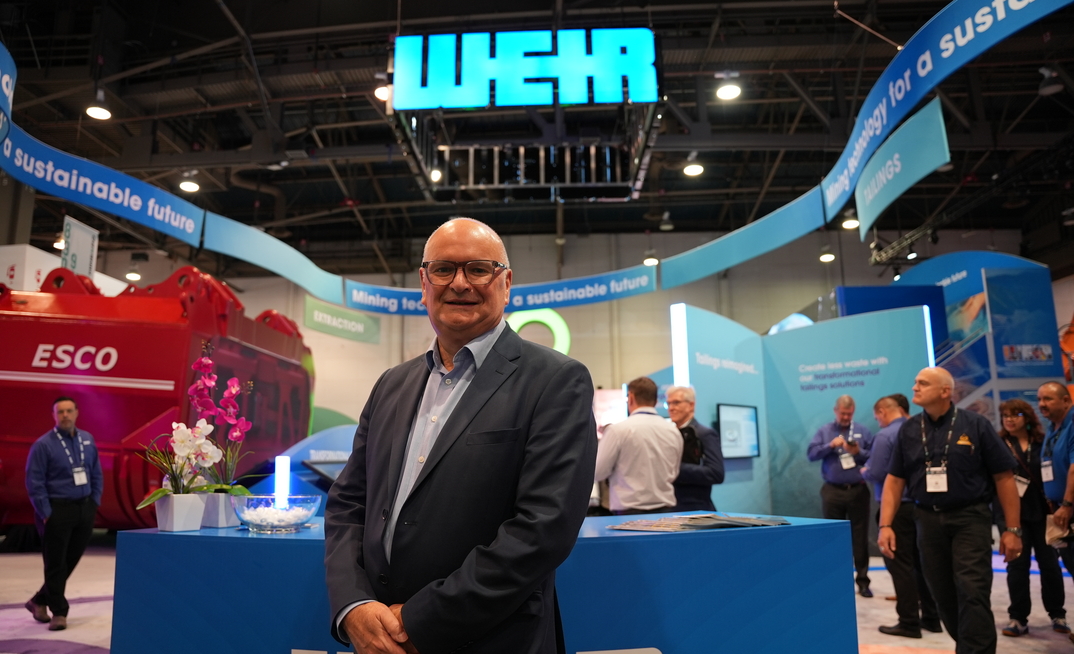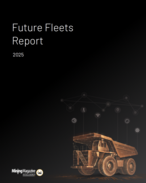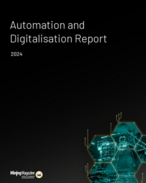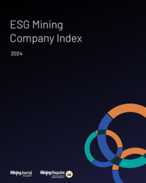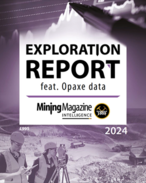When Weir emerged as Micromine's next owner, mining industry insiders were taken aback. Few, if any, had pegged the giant 154-year-old machinery manufacturer as the one to take over the mining software stalwart from private equity firm Potentia Capital.
At a closing price of £624 million (A$1.3 billion), a multiple about ten times Micromine's December revenue, Weir has made a striking statement to its capital machinery competitors and to the mining software world.
Mining Magazine was offered a closer look at the rationale that drove Glasgow-based Weir's acquisition of Australian mining software Micromine in an exclusive interview with Weir chief executive Jon Stanton last week (May 1).
Stanton described the acquisition as a "bold move" by the renowned manufacturer.
YOU MIGHT ALSO LIKE
"As we unveil the vision where we want to go with this, and people can see what it can deliver to them, I think the industry interest is going to be phenomenal," he said.
Market reaction
Stanton has been heartened by the market's response to the deal, even if there were "a couple of eyebrows raised" by its competitors.
"On the day, we ended up the number one riser in the FTSE 100. This is everything you need to know about how the equity markets took the deal," he said. Stanton said that sell-side analysts had said it was exactly the kind of deal "a strong capital goods company" should be making, noting similar precedents with Siemens.
"[Micromine] is an incredibly high-quality business in terms of the number of solutions that it has, and the amount of recurring revenue that it generates (more than 90% of its revenue is recurring). It's highly profitable and cash-generative. Not all software companies have that profile," he said.
It's a profile that fits Weir's model of business. "We have got an inherently very, very resilient business, because most of our revenue [about 80%] comes from the spare parts [aftermarket] needed to keep the mines running."
Orica's Sanjeev Gandhi seemed to take umbrage at the multiple paid by Weir, but Stanton said its outlay was at a similar level in terms of multiples paid in other such deals.
"If you're buying high-quality software assets, you're paying 10- or 11-times revenue. That's the going rate," he said.
Stanton said that the failed A$900 million Aspen Technology bid for Micromine fit the trend too, even if the touted asking price was notably less than Weir's outlay.
"The multiple that we're paying is exactly the same as the multiple Aspen Tech were going to pay. It's just that the business has grown substantially in a couple of years," he said.
Three-phase change
Stanton sees Micromine as initiating a new phase in Weir's years-long restructuring into a "mining-focused platform".
Since Stanton took over the top role in October 2016, Weir has sold its oil and gas, flow control, and nuclear business, and added digital businesses, including NEXT Intelligent Solutions and Motion Metrics, to an expanded mining capital goods business.
Weir has been steadily integrating AI and machine learning in its processing business, integrating sensors to capture real-time data, and building digital twins of its capital machinery.
Its energy-, water-, and carbon-efficient high-pressure grinding rolls (HPGRs) have reached a "tipping point" of acceptance in the mining industry, edging out "old traditional SAG mills… the dinosaurs in the industry" and "[delivering] huge savings on all of those vectors compared to traditional tumbling mills".
"We can make the machines perform better, help customers optimise their operations, improve their productivity, and so on," he said. "It is part of a broader trend. There's a way to do that differently in the future."
Growth acceleration
The Micromine purchase sees Weir transition into its "growth acceleration phase".
"In the last couple of years, we've gotten to know the Micromine business and we've seen a wonderful opportunity to acquire a really high-quality software business that can turbocharge that digital strategy," said Stanton. "It's not something completely different. It's really an acceleration of an existing strategy and taking us to a new level of what we can deliver for the mining industry."
In the short term, Weir would use its reach and relationships to Micromine's advantage. Stanton said that roughly half of the software company's business is in Australia and Asia-Pacific.
"There's a big addressable market out there for Micromine. It's underrepresented in the rest of the world," said Stanton. "Weir obviously has a fantastic global footprint. We're within 200 km of every major mine on the planet."
We don't want to just rise with the tide. We think we've got an opportunity to grow faster than the market
Weir's wide-ranging business with mining companies would "open the doors for Micromine, make warm introductions". Ultimately, Weir's global connections would help it "accelerate adoption of the Micromine technology and help grow the business faster," Stanton emphasised.
Stanton said that these "revenue synergies" would be sufficient for Weir to get a "good outcome for investors" and secure a worthwhile return on capital.
But Stanton sees a larger role for Micromine across Weir's business.
"We don't want to just rise with the tide. We think we've got an opportunity to grow faster than the market through our strategic growth initiatives, and the one that's been building is really our digital capability," he said.
Combination potential
"The longer-term vision is really icing on the cake, which gives more upside to our overall financial model for the deal," said Stanton.
In the coming years, Stanton would combine Micromine's capabilities with Weir's domain knowledge to create an "end-to-end optimisation play for the industry", something that doesn't yet exist.
"If we can combine that domain knowledge to create real-time data flows between what's going on in the mining operations and what's going on in the process plant, then you have a major opportunity to drive significant productivity and efficiency, and increase production, and better yield out of the mine," he said.
Weir would use Micromine to provide real-time inputs to the processing plant "in terms of the grade, the geology, the hardness, texture, moisture content of the rock that's coming down". A mine with this expanse of data could be "constantly maximising the yield".
The other software providers, be they at process level or point solutions, just don't have the end-to-end data and knowledge domain experience to do that. I think that's probably why they're sitting up
"That doesn't happen today at all, it's a batch process," he said.
"The software in the mining industry today is either point solutions, which are optimising workflow and taking manual tasks and automating them, or much higher-level, overall process control, which is more generic to process industries, be they mining, oil and gas, or chemicals. There's nothing in our minds that brings it together and uses more data to enable optimisation."
"Through our existing businesses in ESCO and Motion Metrics, we think we've got a unique set of domain knowledge and understanding of how process [in mining] works. If we can build that into an overarching software platform that joins up that domain knowledge and uses the data and capability that we've been building end-to-end, there's just a whole world of opportunity to create more value for customers," he said.
"The other software providers, be they at process level or point solutions, just don't have the end-to-end data and knowledge domain experience to do that. I think that's probably why they're sitting up."
The leader
Weir has chosen Kristen Walsh, its managing director of the minerals division for the Asia-Pacific region, to lead Micromine and the newly formed digital division.
Stanton said Walsh was "the absolutely perfect candidate". In the three years since she joined Weir, Walsh's division "has delivered the strongest growth and improvement in profitability", and with her training as an engineer and experience in the software industry, she has the right technical background too.
"When I asked her if she wants to do the job, she took all of about one minute to say yes," said Stanton.
Micromine's chief executive Andrew Birch will remain in an advisory role for a year. "That's a great statement from him about his belief in the deal and what they can do," Stanton said.
Next week, the Weir and Micromine leaders will meet in Perth to "map out tactically how we deliver all of this".
"It's going to be an exciting few days," he smiled.


